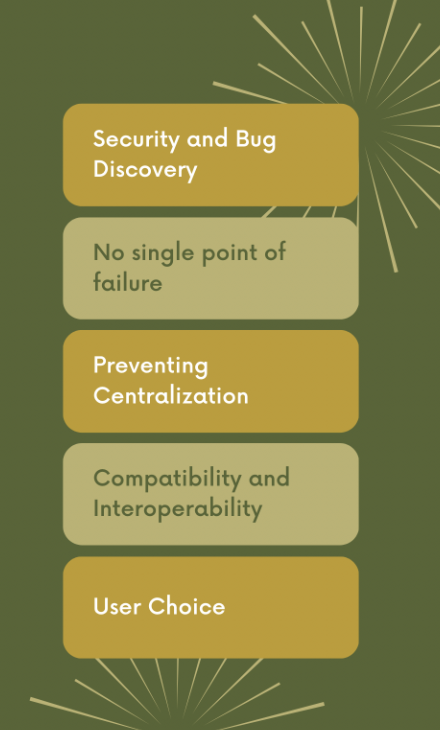Advantages of a multiclient approach to Ethereum
Implementing a multi-client approach is crucial to ensuring the security, decentralization, and overall health of the Ethereum network.
Portal network is building three different clients from the start to ensure a decentralised strategy from day one.
- Trinity
- Fluffy
- Ultralight
Adopting a multi-client approach brings numerous essential benefits for maintaining a secure, decentralized, and resilient blockchain network.
By diversifying client implementations, Ethereum reduces the risk of single points of failure, prevents centralization, promotes compatibility, enhances security, and empowers users with a broader range of choices.
As Ethereum continues to evolve and scale, the multi-client approach remains a fundamental pillar in ensuring the long-term success and sustainability of the network.
An overlooked part of the merge is Ethereum’s unique approach to a multi-client ecosystem. This means that multiple blockchain clients from different teams in different programming languages minimize the possibility of the entire blockchain halting if a bug occurs in one or more clients. E thereum has execution clients and consensus clients that can be mixed and matched to over 20 different combinations, which supports chain security and functionality. Every client is built by a different team; if one team acts out of the community's wishes, it can lose to a more compliant one.

Enhanced Resilience and Robustness:
By employing multiple independent client implementations, Ethereum significantly reduces the risk of a single point of failure. In a multi-client ecosystem, each client represents a different software implementation developed by a separate team. This diversification minimizes the impact of any potential bugs, vulnerabilities, or software issues specific to a single client. Even if one client experiences difficulties, the network can continue to operate seamlessly as other clients maintain network consensus.
Preventing Centralization:
A multi-client approach plays a crucial role in preserving the decentralized nature of the Ethereum network. It ensures that no single client or development team holds ultimate control over the network's rules or decision-making processes. With multiple clients, a healthy balance of power and representation prevents any single entity from monopolizing the network's governance or stifling innovation.
Compatibility and Interoperability:
A multi-client approach promotes compatibility and interoperability within the Ethereum ecosystem. Different client implementations may introduce unique features, optimizations, or improvements, fostering healthy competition and innovation. Interoperability between multiple clients enables developers to create decentralized applications (dApps) that are compatible with various client implementations. It encourages a vibrant ecosystem where developers can choose the client that best suits their needs.
Security and Bug Discovery:
Different client teams independently review and scrutinize the Ethereum protocol specifications and codebase in a multi-client approach. This distributed review process increases the likelihood of identifying security vulnerabilities, potential bugs, or design flaws before they can be exploited. With multiple clients actively participating in code audits and security assessments, the overall security of the Ethereum network is significantly strengthened.
Client Diversity and User Choice:
A multi-client approach allows users to choose the client that aligns with their preferences, requirements, or values. Some clients may prioritize specific features, performance optimizations, or user interfaces catering to different user needs. This diversity fosters healthy client competition, driving innovation and continuous improvement across the Ethereum ecosystem.
Portal Specs